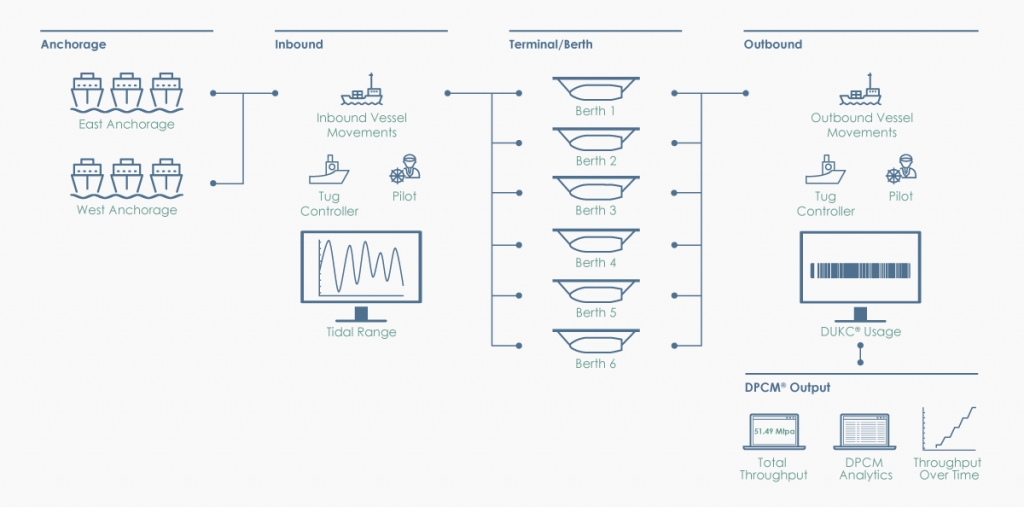The Dynamic Port Capacity Model (DPCM®) accurately simulates port operations, capturing the interactions that occur between the various elements within the port. The DPCM® takes a holistic approach to evaluate port performance, factoring in the uncertainty inherent in any port operations, to provide a reliable decision support tool.

The Dynamic Port Capacity Model (DPCM®) accurately simulates port operations, capturing the interactions that occur between the various elements within the port. The DPCM® takes a holistic approach to evaluate port performance, factoring in the uncertainty inherent in any port operations, to provide a reliable decision support tool.
Optimising Port & Waterway Throughput
The DPCM® is the world’s first and only port capacity model that fully integrates dynamic under keel clearance calculations, site specific environmental conditions, and unique port factors. Through a discrete event simulation model of a port’s operations, the DPCM® provides a tool to assess the impact on port capacity from changes to variables such as ship loader rates, vessel fleet profiles, services and asset availability (tugs, pilots, etc), as well as the effects of port closures.
It can be used for existing port operations, or as a forecast tool to model potential future scenarios, such as larger vessel classes, or a new trade.
The performance of the DPCM® has been validated each year since its development against actual port throughput, and has proven its ability to reliably reproduce the port’s operations.
In addition to realising additional port capacity, the DPCM® has been used to:
- Assess the impacts of dredging (both proposed and actual campaigns)
- Monitor and forecast the impact of changes to the vessel fleet profile, specifically the shift towards 250,000+ DWT vessels
- Evaluate changes to port protocols
- Better understand requirements, benefits, and limitations for port assets and services including:
- loader rates and surge bins
- mooring technologies such as Cavotec MoorMaster
- pilots and tugs